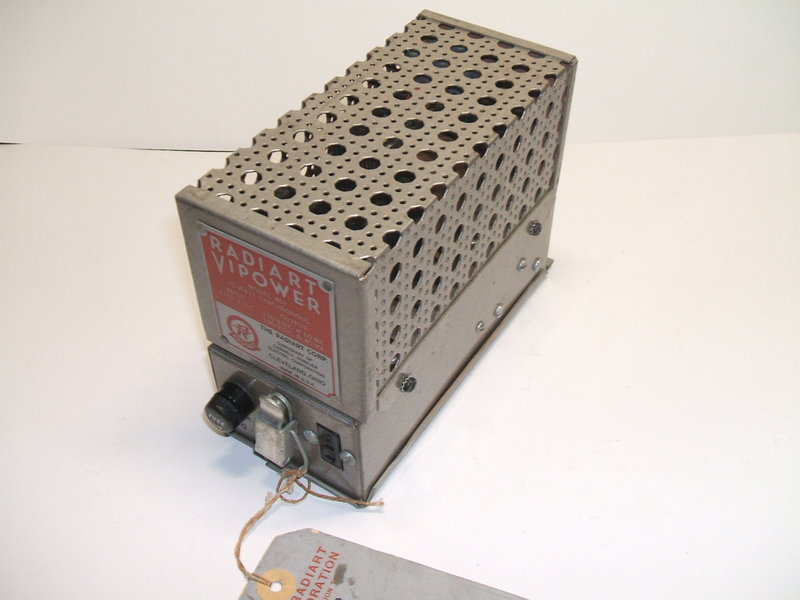

Radiart was another prominent company in
the field of vibrator technology, and like others, offered pre-built vibrator
power supplies. For Radiart, they were sold under the "Vipower" name.
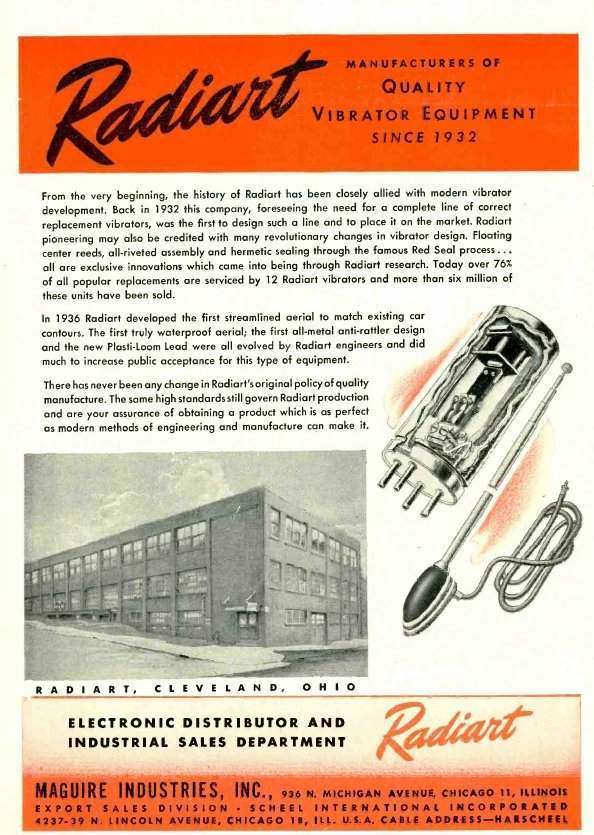
This Model 451 was obtained very inexpensively,
but as always, the postage from the U.S. to Australia was considerably
more expensive than the power supply itself. Fortunately, Radiart doesn't
have the cult following that Heathkit does, and I was the only bidder.
Clearly, this power supply was new and
had never been used. Unfortunately, it seems to have been dropped as the
fuse holder was broken, and the clamp securing the electrolytic filter
condensers had shifted.
Luckily, the Buss 3AG fuse holder was
one that I had an exact replacement for.
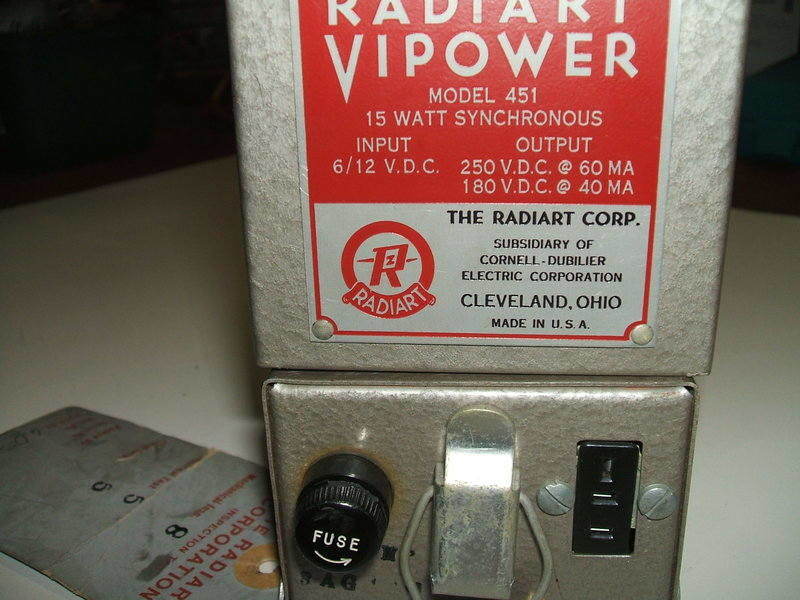
The 451 Vipower can be configured for 6 or 12V input and for an output of 180V at 40mA, or 250V at 60mA. It is curious why the 180V current rating is not higher, since for the same input power to the vibrator and transformer it should be 83mA.
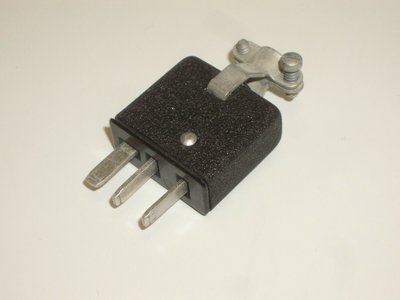
Connection is made with a 3 pin Jones plug.
I have not been able to date the power supply, but it would be no earlier than 1953, when Cornell Dubilier took over Radiart. Stamps on the transformer suggest 1955.
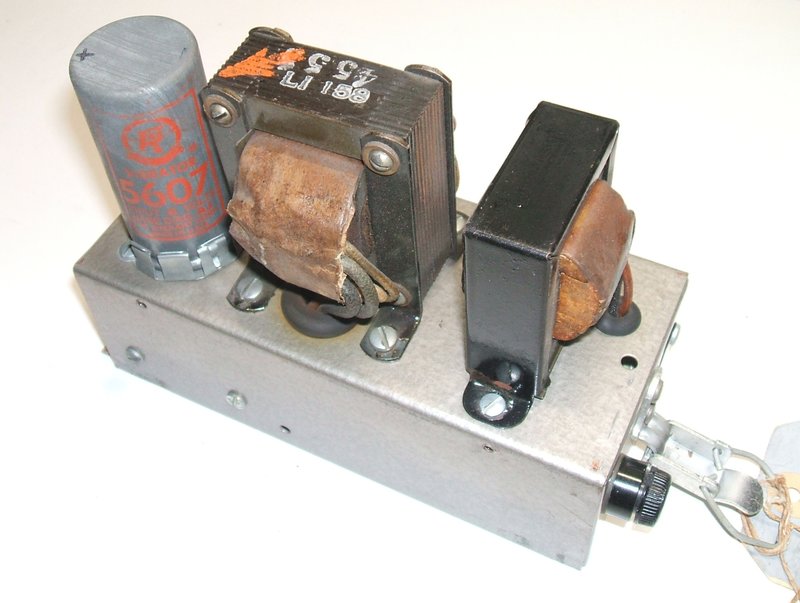
A synchronous vibrator is used, eliminating the need for a valve
rectifier. Note the arrow on the transformer and the + and - markings on
the top of the vibrator.
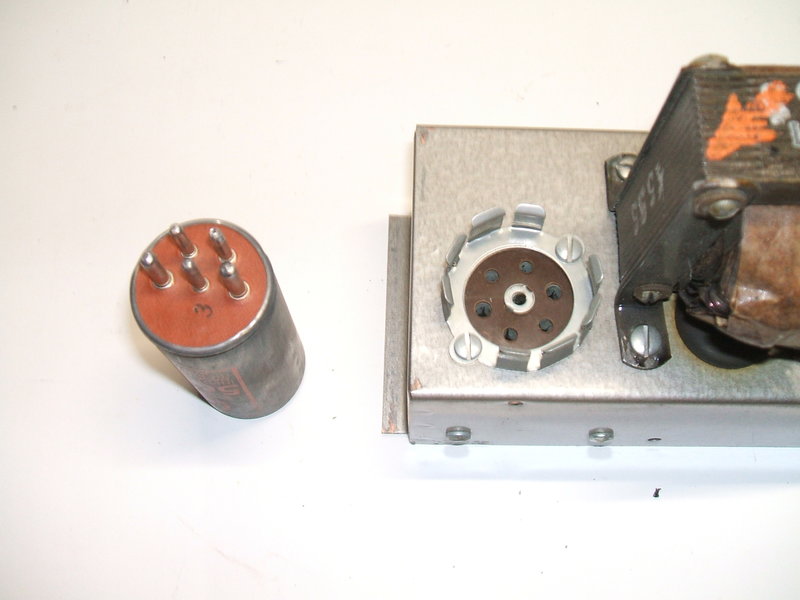
Vibrator uses 5 pin reversible base.
A synchronous vibrator is used which improves efficiency by eliminating the valve rectifier that would be otherwise be required. Not only is 600mA of heater current saved, but the voltage drop in the rectifier is reduced. Additionally, the power supply can be made more compact. To allow for both positive and negative earth, the vibrator is a type with a reversible base. It can be plugged in one of two ways. Conventional base synchronous vibrators require a physical wiring change if the supply is to be used on a different input polarity. This entails reversing the connections to either the transformer primary or secondary. The reversible base has been further described here.
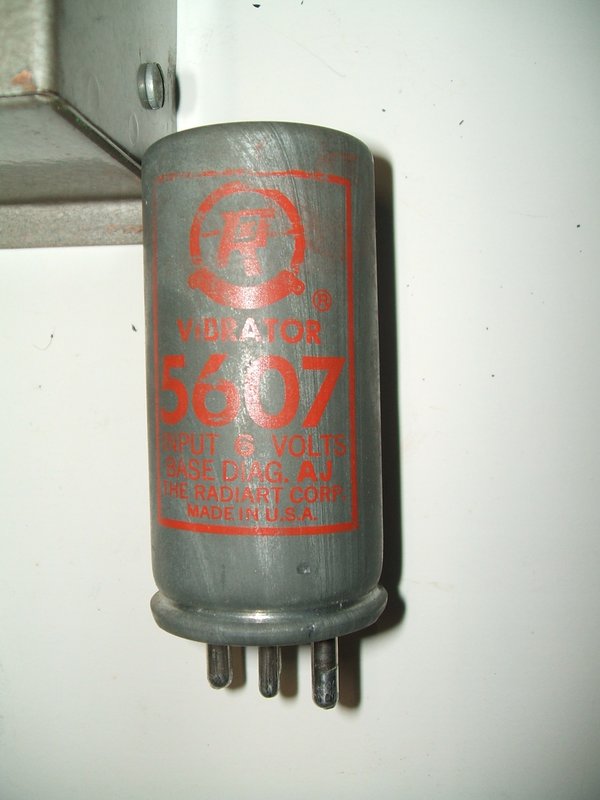
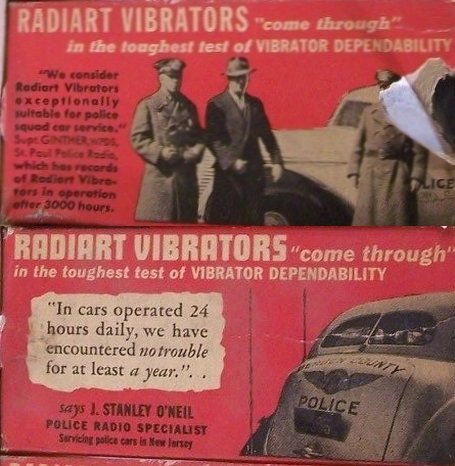
Radiart type 5607 vibrator is used for 6V operation. Radiart prided
themselves with long vibrator life, and the examples seen so far confirm
this.
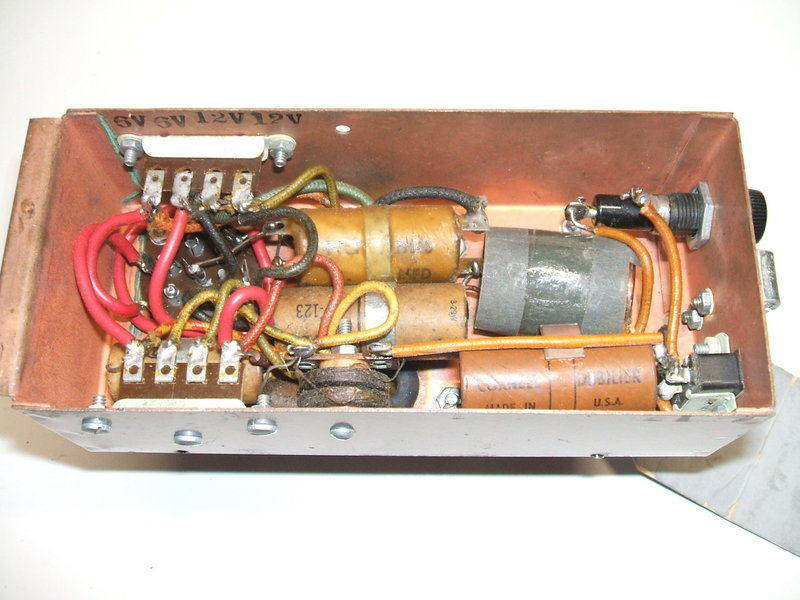
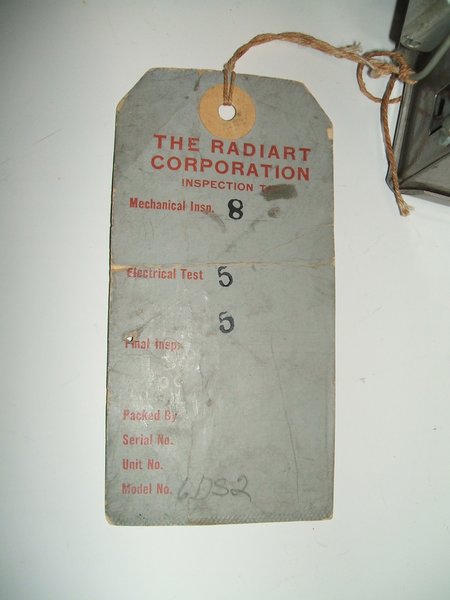
Except for the now replaced fuse holder, all components are new
and original. Note the tagstrip for changing between 6 and 12V input. Test
tag was still attached.
First impressions are of a very well designed
unit. Unlike the other vibrator supplies described so far, this one has
full B+ filtering. The serviceability is excellent, with the base cover
held by a spring clip - no need for a screwdriver to access the insides.
The earth, battery input, and B+ output connections are made via a 3 pin
Jones socket. Unfortunately, a matching plug did not come with the supply.
One was subsequently obtained from element14 (Farnell in Australia), under
the Cinch brand, part number 1298061.
It is also pleasing to see an input fuse
included, something noticeably absent from other supplies. Seeing as input
fusing and B+ filtering are required with all circuits, it is strange that
so many others do not include them. Another thing absent from other supplies
examined to date is a circuit diagram with component values..
It can be imagined that if one of these
supplies had to be taken out of service, another one can be installed in
its place with no tools. The original base plate can remain in situ.
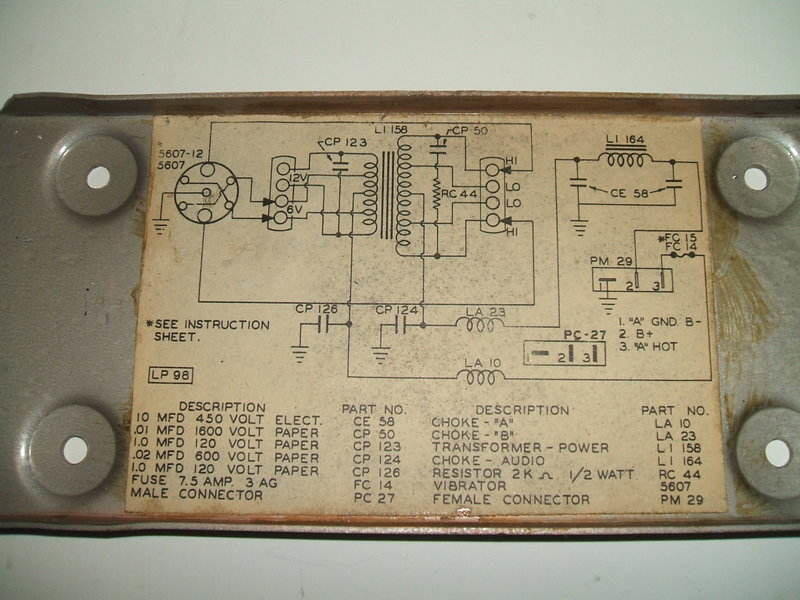
Conveniently, a circuit diagram with component values is provided.
No screw marks confirm the Vipower was new old stock.
As can be seen, the circuit is quite conventional.
The transformer has tappings to allow for either 6 or 12V input. The vibrator
is a synchronous shunt drive type. For 6V input the vibrator is a 5607,
and for 12V it must be replaced with a 5607-12. By the mid 1950's
with 12V types now common, the numbering system used by Radiart / CDE was
changed to reflect this. 12V types were prefixed by "6", so the new type
number for 12V is 6607.
What was perplexing is the 1957 Mallory
catalog claiming there's no equivalent to these three Radiart types. Yet,
they use the conventional 5 pin reversible base with standard connections.
When I investigated this, it was found that the Radiart can was 34mm diameter
and the standard Mallory can is 37mm diameter. All that needs to be done
to use a Mallory type is to replace the grounding cup.
The secondary is also tapped so that either
180V or 250V is provided at the output. Tagstrips are provided for changing
over the tappings as required. There are two timing capacitors. Across
the primary is CP 123, 1uF. Across the secondary is CP 50, 0.01uF in series
with a 2K damping resistor, RC 44. Input RF filtering is achieved by LA
10, which is an air cored choke and CP 126, 1uF. The latter is not a conventional
capacitor, but instead a feedthrough type which minimises lead inductance.
This type has also been used by Mallory in their Vibrapacks as shown here
and here.
Output RF filtering is provided by CP
124, 0.02uF, and RF choke, LA 23. This is a conventional design wound with
that looks like Litz wire in honeycomb fashion. B+ filtering is provided
by two 10uF electrolytics, CE 58, and the choke L1 164.
The only questionable point of design
is that the input choke, LA 10, is quite heavy, but is only supported by
its connecting leads, one of which is terminated on the fuse holder. Thus,
it's likely that the weight of this choke is what broke the back of the
fuse holder.
The B+ filter choke is made by Thordarson,
and presumably the transformer is likewise.
Getting it Going.
Despite all the original paper capacitors
and two electrolytics, I was prepared to power up and test the supply as
is. This was because I know from experience that Radiart / Cornell Dubilier
components are of good quality, and are on par with Mallory.
I was not particularly surprised that
the vibrator started straight away, and the two electrolytics re-formed
very quickly. I have consistently found that along with Mallory, Radiart
vibrators are at the top of list for performance, for U.S. made shunt drive
types.
None of the contacts required cleaning
- full wave operation was obtained immediately.
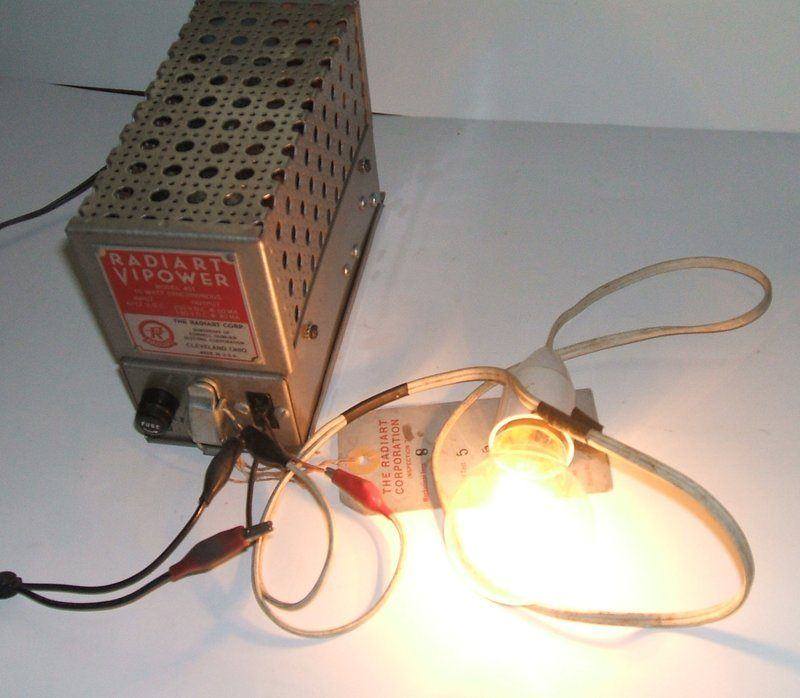
240V 15W lamp testing the Vipower. No Jones plug available at the
time, so wires were poked into the socket.
With 6V input, output was just over 240V into a 15W light bulb (60mA). Input current was about 4A. It must be emphasised that the input current was monitored during the test in case the timing capacitor or electrolytics started to break down. As it happened, they didn't, but having said that, if this power supply gets put into service, the secondary timing capacitor would need to be replaced, and the electrolytics carefully tested or replaced. If the secondary timing capacitor breaks down, the series damping resistor will more than likely burn up and the power supply will operate only with the primary capacitance. This is insufficient on its own, and vibrator life would be made short.
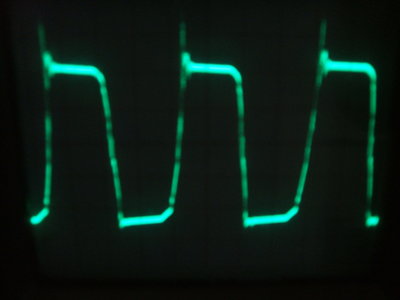
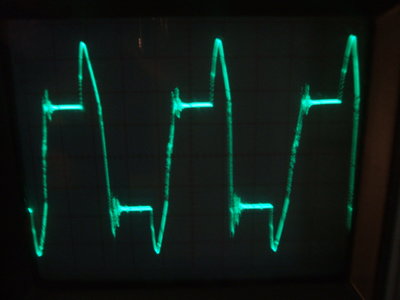
Unloaded and loaded vibrator waveforms.
The primary waveform was examined. There is some lack of symmetry especially evident when the output is loaded. More than likely this is due to the adjustment of one set of primary contacts - as evident by a slight lack of symmetry when unloaded. Given the excellent output and no evidence of anything "bad", it is not felt necessary to adjust the vibrator.
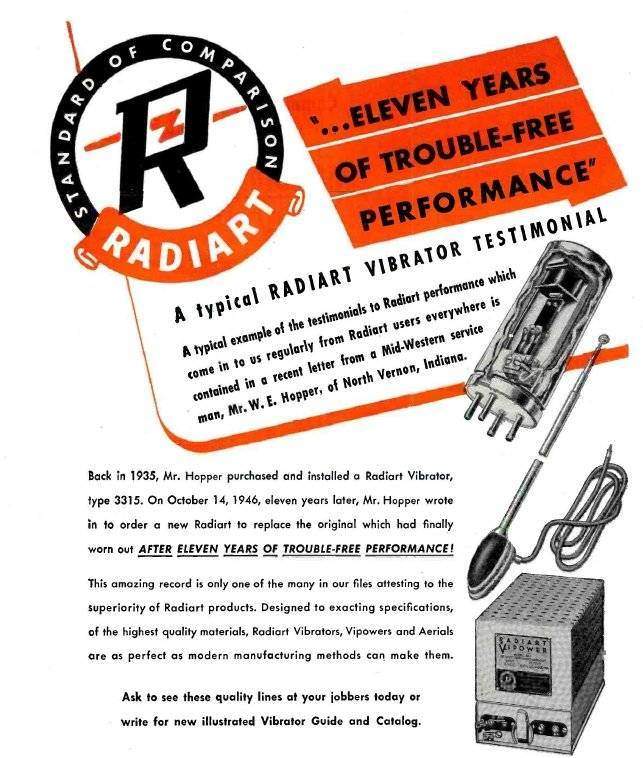
Concerned about vibrator life? Worry not! This 1947 ad shows an
earlier Vipower.
